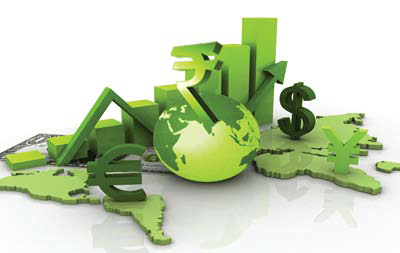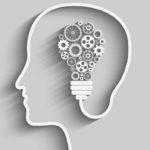The GDP counts air pollution and cigarette advertising, and ambulances to clear our highways of carnage. It counts special locks for our doors and the jails for the people who break them…. It counts the destruction of the redwood and the loss of our natural wonder in chaotic sprawl…. Yet it does not include the beauty of our poetry or the strength of our marriages, the intelligence of public debate or the integrity of our public officials… it measures everything, in short, except that which makes life worthwhile.
–Robert Kennedy
SEE ALSO: Enhancing Workplace Learning: Role of Coaching and Mentoring
A controversial Icon among the Economic Honchos, GDP, traditionally defined as the sum of all goods and services produced within a country in a given year, is the most widely used measure of economic activity. However it has been debated across the world that GDP measures income, not equality, measures growth, not destruction and courageously ignores the values like social cohesion and environment. There are several reasons which question the sanctity of this measure of economic growth and enable us come closer to the indicators that in actual terms measure the welfare of people.
To begin with, GDP does not take into account depreciation of capital goods, depletion of natural resources or degradation of environment. NDP or National Domestic Product does consider the depreciation factor however the possible reason why economists rely heavily on GDP more than NDP is that depreciation is hard to estimate. NDP too as a social measure though fails to take the environmental degradation into consideration.
The relevance of Student Engagement and how IILM supports it’s students through various modes, mediums and processes was also discussed.
Environmental conditions are crucial not only for sustainability but because of their immediate impact on the lives of the individuals. Firstly, they have a profound impact on the human health both direct (Air, Water& noise pollution etc) and indirect (climate change, changes in water cycles, loss of biodiversity, natural disasters etc) ways. Secondly, the benefit derived from healthy environmental services like clean water and air has a higher value. Thirdly, the satisfaction /dissatisfaction derived from environment have a direct impact on their life choices. Lastly, Environmental conditions instigate climatic variations, natural disasters which can be very harmful.
Hence the existing indicator needs to be supplemented with indicators that are more reliable. Following are some such indicators
Alternatives to GDP
To overcome the limitations in the traditional GDP, several new metrics have emerged:
- Green GDP
A concept of the early 1990s that took account of the economic costs of depleted natural resources and incurred pollution affecting human welfare has gained momentum in both public policy and academia. One of the most noteworthy attempts was the implementation of the concept by the People’s Republic of China. The Chinese Government first released its environmentally adjusted GDP in 2006- Green GDP which was jointly prepared by the State Environmental Protection Agency and National Bureau of Statistics. The calculation included the assessments of air, water and solid –waste pollution as well as the costs of depleting natural resources. The report concluded a loss of environmental damages amounting to 3 % of the country’s GDP of 2004.
A concept of the early 1990s that took account of the economic costs of depleted natural resources and incurred pollution affecting human welfare has gained momentum.
Back home, concerns regarding Green GDP have been raised. In 2008, the conventionally measured savings rate for India was 38% of our GDP and according to the world bank’s estimates, the adjusted net savings i.e. the macroeconomic saving rate adjusted for environmental pollution, resource depletion and related environmental factors was 24% of GDP which means that if the real GDP is 9% per year, the net adjusted savings will reflect 6% growth per year Thus, there is a very substantial gap between the economic growth as measured by GDP & the real well-being of the country after adjusting for environmental factors.
- Gross National Happiness (GNH)
A term coined by the Fourth King of Bhutan in the 1970s, GNH is based on the four pillars of sustainable development, preservation and promotion of cultural values, conservation of natural environment and establishment of good governance.
- Index of Sustainable Economic Welfare (ISEW)
Developed in the late 1980s, it accounts for both conventional economic transactions and nonmarket natural and social benefits. The focus of ISEW is to create a balance between positive transactions that benefit human well-being and negative economic activities that diminishes the determined value.
- Genuine Progress Indicator (GPI)
Innovation of Redefining Progress, an NGO focused on Public Policy, this indicator developed in 1994 is essentially similar to ISEW. Both ISEW and GPI are being widely used by international Organizations, governmental agencies and academicians.
- Genuine Savings (GS)
A common development metric proposed by the World Bank in 1999, it considers both natural and human capital. It estimates the domestic savings less the value of resource depletion and environmental degradation.
- Happy Planet Index (HPI)
A relatively new metric introduced by the New Economic Foundation (NEF) in 2006, HPI bypasses the traditional monetary approaches and focuses primarily on the efficiency with which countries translate natural resources into human and societal well-being. It is the ratio of happy life years (the product of life satisfaction and life expectancy) to environmental impact (measured by ecological footprint).
Conclusion
One among many reasons for people to perceive themselves as being worse off despite an increase in GDP is because they are indeed worse off. To ensure that welfare is measured in its true spirit, it becomes imperative to take into account a metric that not only measures the economic development but measures development taking environment into consideration.





